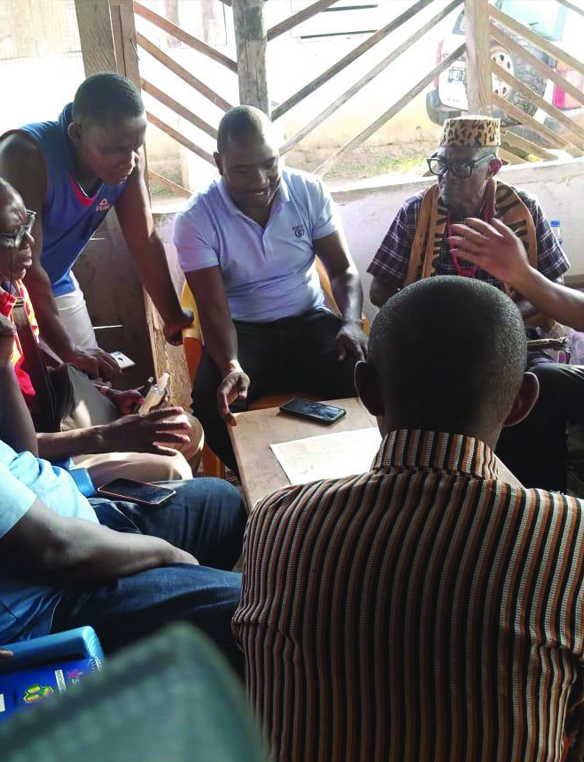GRAND BASSA
- With funding support from the UN Peacebuilding Fund office through UNDP Liberia, Youth Crime Watch of Liberia successfully implemented a nine-month project titled “Enhancing a Peaceful Electoral Environment and Community Security” across five counties including Rivercess County, with a specific focus on key locations such as Owensgrove, Buchanan City, and Compound-one in Grand Bassa County. The overall objective of this project was to strengthen the capacities of various stakeholders, including 100 joint securities, 225 community watch teams, representatives from political parties, and local authorities.

The Project team successfully collaborated with key partners including the Liberia Peace Building Office, the National Election Commission, the Independent National Human Rights Commission, the Liberian National Police, and the Ministry of Justice. The primary focus of the project was to foster a peaceful electoral environment by implementing targeted interventions in conflict prevention and addressing the potential escalation of insecurity, human rights violations, and electoral violence leading up to, during, and after the 2023 General Elections in Liberia. A key component of the project involved enhancing policy reforms and reinforcing existing Early Warning and Response (EWER) mechanisms. This included mainstreaming human rights, gender, and youth-based approaches, particularly at the grassroots level. The project played a vital role in supporting responses to both actual and perceived triggers of electoral violence by integrating a diverse range of actors into the Early Warning and Response mechanism.
In terms of beneficiaries, the project had a significant impact on over 1,500 direct and indirect recipients, including joint securities, community watch teams, political party representatives, and local authorities. Through a complete and joint approach, the Project effectively contributed to creating an environment conducive to the just-ended peaceful elections, while simultaneously addressing potential challenges related to insecurity and electoral violence. The success of the project underscores the importance of multi-stakeholder partnerships in promoting sustainable peace and security within the context of democratic processes.
- The USAID Youth Advance (TYA) Project increases the economic self-reliance and resilience of 21,000 youth by strengthening basic education and foundational life skills for improved livelihoods. This Project strengthens and provides empowerment skills for improved livelihoods. Lastly, the Project improves an enabling environment for youth productivity in Liberia. Out of the 21,000 youths, Youth Crime Watch of Liberia has a one-year target of 300 youths in both Grand Bassa and Montserrado counties that are benefitting from the project under the pathway one (P 1) component.
In Grand Bassa County, Youth Crime Watch of Liberia worked in Compound One, Little Bassa, and Compound 2. The project collaborates extensively with local youth, stakeholders, the local media, and existing institutions to identify and enlist 300 youths for the TYA program, evenly distributed between boys and girls (150 each). At the project’s initiation, a kick-off or community entry meeting was organized with key local stakeholders in the project communities. These meetings provided details information about the project, fostering transparency and accountability. The 300 identified youth are categorized based on Youth Crime Watch of Liberia’s priorities into two of the TYA Project’s three components.
